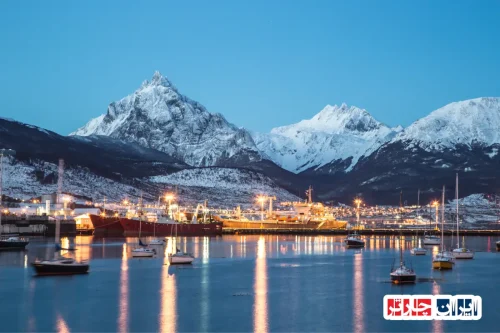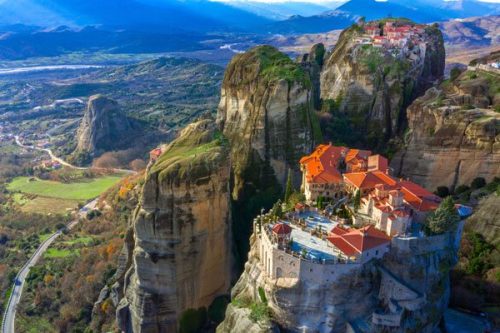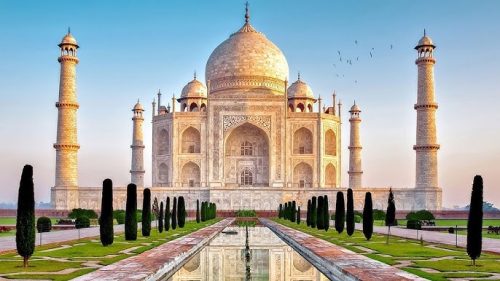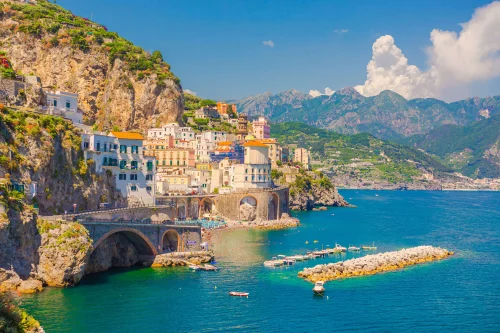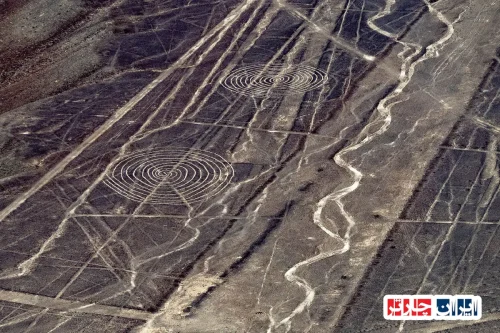Discover the Majestic Virunga Mountains: A Natural Treasure in Rwanda, DRC, and Uganda
The Virunga Mountains-Iran Charter represent one of Africa’s most iconic and ecologically significant regions, stretching across Rwanda, the Democratic Republic of Congo, and Uganda. These mountains are renowned for their breathtaking landscapes, diverse ecosystems, and as a sanctuary for endangered species such as mountain gorillas. Visitors to this region can experience a unique blend of natural beauty and adventure, from lush forests and volcanic peaks to vibrant wildlife populations. The Virunga Mountains serve not only as a symbol of natural heritage but also as a vital area for conservation efforts that protect the rich biodiversity of East Africa. Exploring this region offers unparalleled opportunities for eco-tourism, scientific research, and cultural exchange, making it a must-visit destination for nature enthusiasts and adventure seekers alike. The ongoing efforts to preserve and sustainably manage the Virunga range highlight its importance for global ecological stability and local community development. Whether you are interested in wildlife safaris, mountain climbing, or simply immersing yourself in pristine nature, the Virunga Mountains in Rwanda, DRC, and Uganda provide an unforgettable experience that underscores the beauty and resilience of our planet’s natural landscapes.
![]()
Discover the Magnificent Virunga Mountains: The Heart of Africa’s Wilderness in Rwanda, DRC, and Uganda
The Virunga Mountains are among Africa’s most iconic natural wonders, stretching across Rwanda, the Democratic Republic of Congo, and Uganda. This volcanic mountain range is renowned for its breathtaking landscapes, diverse ecosystems, and critical role in global conservation efforts. As a UNESCO World Heritage Site, the Virunga Mountains attract travelers, researchers, and conservationists alike, all eager to experience their unique beauty and ecological significance. The region’s lush forests, active volcanoes, and pristine lakes create a captivating environment that embodies the essence of Africa’s wilderness.
The Formation and Evolution of the Virunga Mountain Range
The Virunga Mountains have a complex geological history shaped by millions of years of volcanic activity. Originating from tectonic movements and eruptions, these mountains have evolved into a rugged landscape featuring some of the continent’s highest peaks. Over centuries, successive eruptions have built the volcanic cones and calderas that define the range today. Recognized globally for their geological importance, the mountains continue to be active, with ongoing eruptions contributing to their dynamic character. International efforts have focused on protecting this geologically significant area, ensuring its natural features are preserved for future generations.
Rich Biodiversity and Endangered Species of the Virunga Region
The Virunga Mountains are a biodiversity hotspot, hosting an array of flora and fauna found nowhere else on Earth. The dense forests are home to the critically endangered mountain gorillas, particularly in Rwanda’s Volcanoes National Park and Uganda’s Mgahinga Gorilla National Park. Besides gorillas, the region shelters elephants, lions, buffalo, and a multitude of bird species, making it a vital sanctuary for conservation. Protecting these species is a global priority, with extensive programs dedicated to anti-poaching, habitat restoration, and scientific research. The ecological richness of the Virunga Mountains underscores their importance as a natural heritage and a symbol of wildlife conservation worldwide.
Top Trekking Routes and Eco-Tourism Opportunities in the Virunga Mountains
The Virunga Mountains offer some of Africa’s most exhilarating trekking experiences, attracting adventure seekers from around the world. Guided hikes through lush forests lead visitors to observe mountain gorillas in their natural habitat, providing unforgettable encounters with wildlife. Other popular activities include volcano climbing, birdwatching, and exploring scenic lakes and waterfalls. These eco-tourism activities are designed to promote sustainable development, ensuring local communities benefit economically while preserving the environment. Well-maintained trails, expert guides, and eco-friendly practices make the region a premier destination for responsible tourism.
The Critical Role of Virunga National Park in Wildlife Conservation
Virunga National Park, spanning parts of the DRC, is Africa’s oldest national park and a cornerstone of conservation efforts. It serves as a refuge for endangered species such as mountain gorillas, eastern chimpanzees, and the rare okapi. The park’s management employs innovative strategies like community engagement, anti-poaching patrols, and scientific monitoring to safeguard its ecosystems. These initiatives have led to significant population recoveries, demonstrating the park’s vital role in global biodiversity preservation. Its success story inspires conservation projects worldwide, emphasizing the importance of protected areas in maintaining ecological balance.
Adventurous Activities and Mountain Climbing in the Virunga Range
For thrill-seekers, the Virunga Mountains present a range of challenging activities, including volcano trekking and mountain climbing. Climbing Mount Nyiragongo, known for its active lava lake, offers a rare opportunity to witness volcanic activity up close. The ascent requires physical endurance and guided expertise, but rewards climbers with spectacular views and a sense of achievement. Other peaks like Mount Mikeno and Mount Muhabura also attract climbers eager to explore their rugged terrains. These adventures are conducted with strict safety protocols, and contribute to local economies through tourism revenue, while fostering awareness about volcanic hazards and environmental conservation.
The Socioeconomic Impact of Tourism in the Virunga Region
Tourism is a vital driver of economic development for communities surrounding the Virunga Mountains. It creates employment opportunities in guiding, hospitality, transportation, and crafts, improving livelihoods and reducing poverty. Additionally, tourism fosters cultural exchange and promotes local traditions, strengthening community identity. Sustainable tourism initiatives ensure that economic benefits do not come at the expense of environmental health, with community-based programs encouraging local participation. The revenue generated supports conservation projects, infrastructure development, and education, making tourism a key element in balancing ecological preservation with socioeconomic progress.
Stories of Conservation Heroes and Local Guardians of the Virunga Mountains
Behind the scenes of conservation success are dedicated rangers, scientists, and local communities committed to protecting the Virunga ecosystem. Rangers patrol the forests daily, combating poaching and illegal activities, often risking their lives to safeguard wildlife. Local communities participate in conservation efforts through education and alternative livelihood programs, fostering a sense of ownership and responsibility. Many inspiring stories highlight the resilience and dedication of these guardians, whose efforts have led to the recovery of endangered species and the preservation of vital habitats. Their work exemplifies the power of collective action in safeguarding Africa’s natural treasures for future generations.
Challenges of Climate Change and Environmental Threats in the Virunga Mountains
The Virunga region faces mounting challenges from climate change, including rising temperatures, unpredictable rainfall, and melting glaciers. These changes threaten the delicate balance of ecosystems, impacting water sources, vegetation, and wildlife habitats. Additionally, human activities such as deforestation, illegal mining, and poaching exacerbate environmental pressures. Addressing these issues requires coordinated efforts involving local communities, governments, and international organizations. Implementing sustainable practices, monitoring environmental changes, and raising awareness are essential to mitigate climate impacts and ensure the long-term health of the Virunga Mountains. Protecting this natural heritage is crucial not only for regional stability but for global ecological resilience.
Frequently Asked Questions about the Virunga Mountains and Conservation
- What are the Virunga Mountains?
- The Virunga Mountains are a volcanic mountain range located across Rwanda, the Democratic Republic of Congo, and Uganda. Known for their stunning landscapes, diverse ecosystems, and active volcanoes, they are a UNESCO World Heritage Site and a vital area for wildlife conservation and ecological research.
- Where are the Virunga Mountains located?
- The range spans three countries in East Africa: Rwanda, the Democratic Republic of Congo, and Uganda, forming a natural border and offering a variety of ecological zones and habitats.
- What makes the Virunga Mountains ecologically significant?
- The mountains host unique biodiversity, including critically endangered mountain gorillas, elephants, lions, and numerous bird species. Their ecosystems are crucial for global conservation efforts and scientific research.
- How were the Virunga Mountains formed?
- The range was created through millions of years of volcanic activity driven by tectonic movements. Eruptions built the volcanic cones and calderas, shaping the rugged landscape we see today.
- Are the volcanoes in the Virunga range active?
- Yes, several volcanoes, including Mount Nyiragongo, are still active, with ongoing eruptions that contribute to the dynamic geological features of the region.
- What species are endangered in the Virunga region?
- Endangered species include mountain gorillas, eastern chimpanzees, and the rare okapi. The region is a critical habitat for these and many other species threatened by poaching and habitat loss.
- What are the main activities for tourists in the Virunga Mountains?
- Popular activities include gorilla trekking, volcano climbing, birdwatching, and exploring scenic lakes and waterfalls. These eco-tourism options promote sustainable development and local community benefits.
- How does Virunga National Park contribute to conservation?
- As Africa’s oldest national park, it provides a sanctuary for endangered species and employs innovative management strategies like anti-poaching patrols, community engagement, and scientific monitoring to preserve biodiversity.
- What are the challenges of climbing Mount Nyiragongo?
- Climbing Mount Nyiragongo requires physical endurance and guided expertise due to its active lava lake and rugged terrain. The climb offers spectacular views but demands safety precautions and proper preparation.
- How does tourism impact local communities around the Virunga Mountains?
- Tourism creates jobs in guiding, hospitality, and crafts, boosting local economies and reducing poverty. It also encourages cultural exchange and supports conservation efforts through revenue sharing.
- What stories inspire conservation efforts in the Virunga region?
- Many dedicated rangers, scientists, and local guardians risk their lives to protect wildlife. Their resilience and commitment have led to species recovery and habitat preservation, inspiring global conservation initiatives.
- What environmental threats do the Virunga Mountains face?
- Climate change, deforestation, illegal mining, and poaching threaten the region’s ecosystems. Rising temperatures and melting glaciers impact water sources and habitats, requiring coordinated mitigation efforts.
- How is climate change affecting the Virunga Mountains?
- Climate change causes rising temperatures, unpredictable rainfall, and glacier melting, which disrupt ecosystems and threaten wildlife and local communities dependent on natural resources.
- What measures are being taken to protect the Virunga Mountains?
- Efforts include establishing protected areas, community involvement, anti-poaching patrols, scientific research, and international cooperation to address environmental threats and promote sustainable tourism.
- Why is the Virunga region important globally?
- It is a critical biodiversity hotspot and a symbol of successful conservation. Protecting this region benefits global ecological stability, supports endangered species, and promotes sustainable development.



















